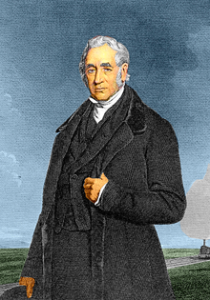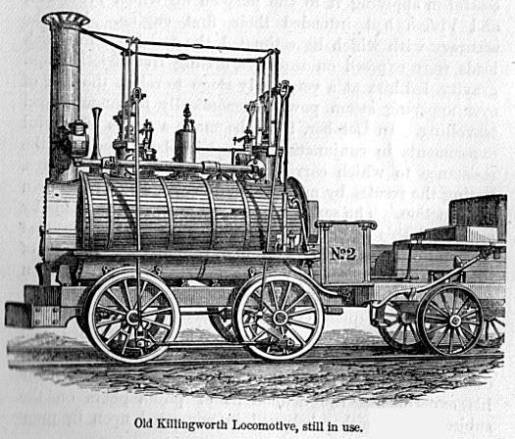When I started writing the chapters about Roberta Stephenson that became Steam and Stratagem I wanted to ground her in the real world of 19th century Britain even if she herself was a fictional character. I had planned to have her be a steamship engineer, and a few Wikipedia searches of the early engineers soon showed me that George Stephenson had the most interesting background. An illiterate son of an illiterate coalmine pumping-engine fireman, George by his own efforts became the first president of the Institution of Mechanical Engineers on its formation in 1847. One could hardly find better father for her story.
He used money from his first job, as an engineman, to educate himself, which in the story is more than enough evidence that had his real daughter Fanny (who had died mere days after her birth) survived she could well have been sent to the fictional Miss Mather’s Acadamy for Girls in place of Roberta. He did educate his real son Robert; early on the two studied engineering together, and when he became prosperous he sent Robert to a private academy to study. He also took care that his son spoke ‘posh’ English to avoid the southern prejudice against northerners with thick accents. I have given Roberta a similar refined voice throughout the novels.
The disputes with Sir Humphrey Davy over the invention of the miners’ safety lamp is mentioned in the story and was a result of academic prejudice. Although two investigations came to the conclusion that Stephenson’s invention was independent of Davy’s the educated southern elite preferred to believe that a mere engineman could never have produced the design unaided and Davy went to his grave still believing his design was stolen. In the story I have Roberta’s father letting her go south with their designs to approach the Admiralty—a reflection of the way he made Robert his mouthpiece and manager of his locomotive works.
While the Trevithick loco of 1802 is considered to be the first practical steam locomotive, George Stephenson’s 1814 travelling locomotive for the Killingworth wagonway is credited with being the first successful flanged wheel adhesion locomotive and the forerunner of all railway locomotives today. The steamship yard in the story is a pure fiction, he never built ships, but the railway planning still used today of following the least resistance to travel by keeping rail grades as flat as possible is a principle he followed for his own railway projects. His careful engineering became somewhat too expensive during his lifetime and he went into semi-retirement, letting his son manage the locomotive works and developing some of the coal seams discovered during the construction of the North Midland Railway as supervisor and investor of the subsequent mines. My stories end before George Stephenson’s retirement, but the end of “Spies and Subterfuge” shows Roberta, and the right man she has finally chosen to marry, are planning to work together in an industry where her Father’s position is that of advisor.
I have resumed writing my blog called Rustic Realizations at http://kester2.wordpress.com/ and am following the anniversaries of the first abdication of Napoleon in 1814 and the start of WWI in 1914—from our viewpoint in 2014. The first post, “to end all wars” is up now. This post is later than I promised, but I had both computers down before Christmas.
Tags: George Stephenson, miners' lamp, railways, Robert Stephenson, self taught, Steam and Stratagem


January 16, 2014 at 10:04 pm |
Glad you decided to stretch the truth a bit, Chris. I get it now why her name is Roberta. Nice touch. I’m also glad to see you back posting.